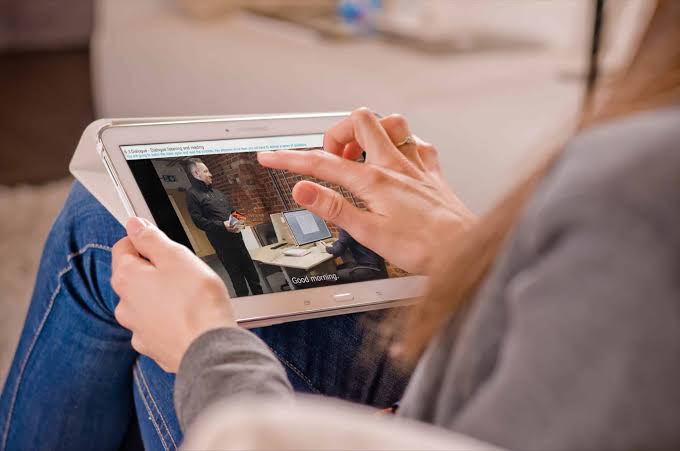The integration of technology into education has transformed traditional learning environments with tablets emerging as significant tool in this evolution. As portable devices with robust capabilities, tablets have reshaped how students access information. They interact with educational content and engage in learning activities. This article explores multifaceted impact of tablets on modern education and learning. Emphasizing their benefits challenges and future potential.
Tablets provide students with unparalleled access to vast array of educational resources. Unlike traditional textbooks which can be bulky and limited in scope, digital resources available on tablets are continually updated. They can also include interactive elements. Educational apps and e-books offer dynamic learning experiences. Traditional methods can't match these methods. For instance students can access multimedia content such as videos animations and interactive simulations that enhance understanding. This also aids retention of complex concepts.
The availability of online libraries and databases through tablets further expands students' access to information. Resources such as academic journals, research papers and educational websites are readily available. This allows students to conduct research more efficiently and comprehensively. This easy access to diverse sources of information fosters independent learning and encourages students to explore topics beyond their curriculum.
Interactive and Personalized Learning
One of the most significant advantages of tablets in education is their ability to facilitate interactive and personalized learning experiences. Educational apps and software designed for tablets often incorporate adaptive learning technologies that tailor content to individual students' needs and learning styles. This personalization allows students to progress at their own pace, receiving immediate feedback and support tailored to their specific strengths and weaknesses.
Interactive features, such as touchscreens and stylus support, enable students to engage with educational content in more hands-on ways. For example, students can draw diagrams, annotate texts, and complete interactive exercises directly on their tablets. These interactive elements make learning more engaging and can help students better understand and retain information.
Collaboration and Communication
Tablets also enhance collaboration and communication among students and between students and teachers. Many educational apps and platforms support real-time collaboration, allowing students to work together on projects, share ideas, and provide feedback to one another. This collaborative approach fosters teamwork and helps students develop essential communication and interpersonal skills.
In addition, tablets facilitate communication between students and educators. Teachers can use tablets to provide instant feedback, track student progress, and offer additional resources. Through various communication tools and platforms, such as email, messaging apps, and educational forums, students can ask questions, seek clarification, and engage in discussions with their teachers outside of the classroom. This continuous line of communication supports a more personalized and responsive learning experience.
Support for Diverse Learning Needs
Tablets offer valuable support for students with diverse learning needs. For students with disabilities, tablets can be equipped with assistive technologies such as screen readers, speech-to-text applications, and customizable display settings. These features make educational content more accessible and enable students with varying abilities to participate fully in the learning process.
Moreover, tablets can accommodate different learning styles and preferences. Visual learners benefit from multimedia content and interactive diagrams, while auditory learners can take advantage of audio books and podcasts. The flexibility of tablets in catering to various learning styles ensures that all students have the opportunity to engage with educational material in a way that suits them best.
Challenges and Considerations
Despite their numerous benefits, the integration of tablets into education presents several challenges and considerations. One significant concern is the potential for distractions. The multifunctional nature of tablets means that students can easily switch from educational apps to games, social media, or other non-educational content. Ensuring that tablets are used effectively for learning requires the implementation of appropriate guidelines and monitoring.
Additionally, the cost of tablets and the associated technology can be a barrier for some schools and students. While prices for tablets have decreased over time, the initial investment and ongoing costs for apps, software, and maintenance can still be substantial. Schools and educational institutions must consider these financial aspects when integrating tablets into their curricula.
Another challenge is the need for adequate training and support for educators. Teachers must be equipped with the skills and knowledge to effectively incorporate tablets into their teaching practices. Professional development opportunities and technical support are essential to help educators make the most of tablet technology and integrate it seamlessly into their instruction.
Future Potential and Trends
Looking ahead, the role of tablets in education is likely to continue evolving as technology advances. Emerging trends such as augmented reality (AR) and virtual reality (VR) are poised to further enhance the educational experience. Tablets equipped with AR and VR capabilities can offer immersive learning experiences that bring abstract concepts to life and provide students with hands-on practice in virtual environments.
Additionally, advancements in artificial intelligence (AI) and machine learning may lead to even more personalized learning experiences. AI-powered educational apps could offer more sophisticated recommendations and feedback, further tailoring content to individual students' needs and learning styles.
The continued development of cloud-based technologies will also play a significant role in the future of tablet-based education. Cloud storage and collaboration tools enable seamless access to educational materials and facilitate real-time collaboration among students and educators, regardless of their location.
Conclusion
Tablets have made a profound impact on modern education and learning by enhancing access to resources, supporting interactive and personalized learning, and fostering collaboration and communication. While challenges such as distractions, costs, and the need for educator training exist, the benefits of tablets in education are significant. As technology continues to advance, tablets will likely play an increasingly important role in shaping the future of education, offering innovative solutions and opportunities for both students and educators.
